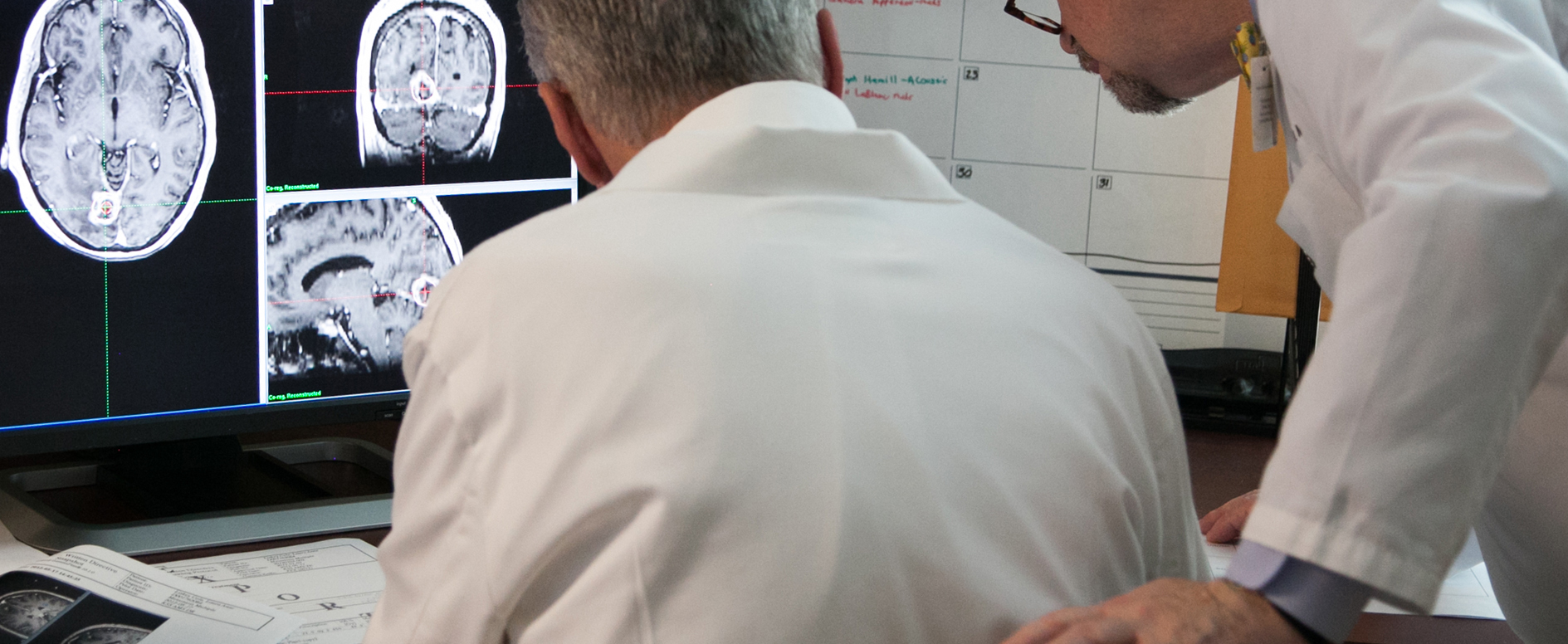
Meeting with a Radiation Oncologist
If you are considering radiation therapy, you must first meet with a radiation oncologist. You may also be seen by a medical student, a resident (radiation oncologist in training), a nurse practitioner, a physician’s assistant or a nurse along with your physician. During your first visit, your doctor will evaluate you to determine if radiation therapy will be helpful in treating your disease. This includes reviewing your current medical history, past medical history, past surgical history, family history, medications, allergies, lifestyle and current symptoms. The doctor will also perform a detailed physical exam to assess the extent of your disease and assess your general physical condition. Your medical record will be reviewed including any relevant imaging and laboratory studies. Frequently, your care will be discussed between a multidisciplinary group of specialists including medical oncologists, surgeons, radiologists and pathologists to individualize treatment recommendations. The radiation oncologist will discuss the benefits, risks, side effects and treatment alternatives of radiation therapy with you and caregivers. If you decide to receive radiation therapy, you will proceed to treatment planning at the appropriate time.
Simulation
Radiation therapy must be aimed precisely at the treatment target each and every time treatment is given. The process of measuring your body and tumor to help your team direct the beams of radiation safely and accurately to their intended locations is called simulation.
During simulation, your radiation oncologist and radiation therapist place you on the simulation machine in the exact position you will maintain during the actual treatment. Immobilization devices such as molds, casts, headrests or other devices are customized to help you remain in the same position during the entire treatment. The radiation therapist, under the radiation oncologist’s supervision, marks the area to be treated on the immobilization devices and/or your skin with either a bright, temporary paint or a set of small, permanent tattoos. Often, a special treatment planning CT scan is done to help with the treatment planning. This CT scan is in addition to prior diagnostic CT scans and helps with designing the placement and shape of the radiation beams. Your radiation oncologist may request that special blocks or shields be made for you. These devices are used with each treatment to direct the radiation to your tumor and keep the radiation away from normal tissue.
Treatment Planning
Once you have finished simulation, your radiation oncologist and other members of the treatment team review information obtained during simulation along with your previous medical tests to develop a treatment plan. The goal of radiation therapy is to develop a plan that maximizes the dose to the cancer and minimizes the dose to normal tissues. Radiation treatment technique, radiation dose, as well as beam angles and shapes will be selected during the planning process. A team of experts including your radiation oncologist, medical physicist and dosimetrist will work together to develop the radiation treatment plan. A sophisticated treatment-planning computer and associated software may be used to help design the best possible treatment plan. After reviewing all of this information, your radiation oncologist will write a prescription that outlines exactly how much radiation you will receive and to what parts of your body.
Quality Assurance before Treatment
Once your radiation oncologist approves the radiation therapy plan developed in treatment planning, members of the radiation treatment team work together to ensure that your specific treatment plan works correctly on the linear accelerator before treatment begins. A "dry run" is often completed for more complex treatments by a medical physicist to ensure that the radiation treatment designed for you is as accurate and as safe as possible.






